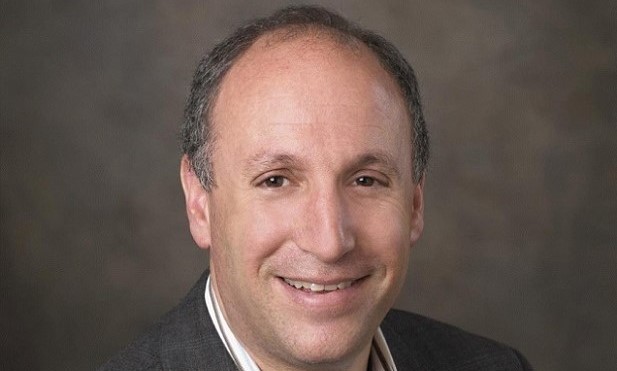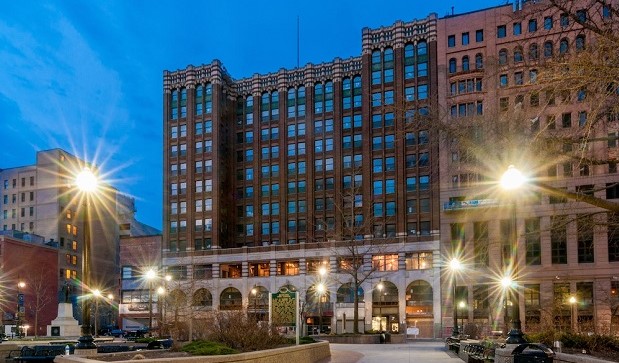 Richard Broder, chief executive officer Broder & Sachse Real Estate
Richard Broder, chief executive officer Broder & Sachse Real EstateCHICAGO—Broder & Sachse Real Estate is one of many firms that has helped lead the transformation of Downtown Detroit. The CBD that once was a posterchild for disinvestment and bankruptcy has become a thriving core with new retail, multifamily housing, renovated office buildings and sparkling amenities. But the lessons that local developers and landlords are learning as they go forward with the downtown's transformation can be applied to many cities and submarkets. That's especially true for markets that, like Detroit, are less mature and have not had opportunities to evolve organically. And one of the most important tasks developers need to understand is how to integrate new retail concepts into the revival of untraditional spaces. GlobeSt.com spoke with Richard Broder, chief executive officer Broder & Sachse Real Estate, on the how the company was meeting those challenges.
Globe St: With urban centers across the country becoming increasingly popular infill and redevelopment targets, most notably for mixed-use concepts, we are seeing retail brands and businesses forced to come with new formats and floorplans to “fit in” with unconventional spaces and opportunities.
RB: Absolutely. In many cases they've been flexible and creative in finding ways to make that work. We've all seen scaled down versions of familiar suburban concepts designed to work in the tighter confines of downtown environments. I think retailers and developers alike need to think carefully and critically about the other ways in which they occupy untraditional spaces, as well.
Globe St: What do you mean by that?
RB: Well, specifically when thinking about coordinating with office, residential or hospitality components. The development calculus becomes more complex. On the one hand, the basic considerations don't change, whether you're talking about downtowns or suburban settings: specifically, it's about geography and demand. Is there a market for your product or service?
Globe St: I'm sensing a but…
RB: Well, at least an also. Because when we're thinking about co-tenancy, operational, experiential and development synergies in downtown spaces, you also have to take into account things like fit and functionality, balancing tenant needs versus what's best for the building or project, and making smart decisions based on the specific urban context and market makeup—in other words: what's happening in the city around you?
Globe St: Let's take those one at a time if you don't mind. Talk a little more about the issue of the right fit that you mentioned.
RB: Sure. A big part of it is simple logistics. What does the retailer need in terms of delivery requirements, what are the hours of operation, that kind of thing. If you want your retailer and your office tenant to play nicely, the last thing you need is a situation where people are stepping on each other's toes—both figuratively and literally. There's also more to it beyond operational mechanics. You need to consider fit in more conceptual terms, thinking about things like brand and “tone.” I've used the example before of a high-end law firm and a Disney Store probably not making the best pairing. That same mindset needs to be applied to not just the building, but the neighborhood retail mix and market dynamics as well.
 The Albert at Capitol Park in Detroit was first built in 1929 as an office building, but was recently renovated by Broder & Sachse Real Estate Services into a 127-unit multifamily.
The Albert at Capitol Park in Detroit was first built in 1929 as an office building, but was recently renovated by Broder & Sachse Real Estate Services into a 127-unit multifamily.Globe St: That makes sense. I imagine that leads to your second point, about balancing different or competing priorities between the tenant and the project?
RB: It's always a little bit of a balancing act for owners and developers. On the one hand, they need to be flexible when it comes to accommodating to specific retailer location requests. In most cases, the office tenants aren't as concerned about their location within the building as potential retailers are. On the other hand, owners and developers need to be thoughtful and make sure they are taking the needs, preferences and priorities of all tenants into consideration. That balance needs to be there across the project and within the market at large. Picking the right retail tenant for an urban mixed-use project isn't just about rental rates and name recognition, it's also about asking yourself if this is the right fit for your building and your project as a whole. The answers to those questions can be surprising and sometimes even confusing or contradictory. The bottom line is that the best deal on paper may not actually be the best decision for the long-term success of the project.
Globe St: And do those larger market questions overlap with the civic context considerations you mentioned earlier?
RB: Absolutely. Although the extent to which they do depends on what's happening in the city around you. A city like Detroit, for example, which is in the middle of a redevelopment boom and a kind of civic renaissance, needs to be particularly cautious and strategic about how to fill gaps in the market—more so than in a more mature and fully developed urban “ecosystem” like New York or Chicago, where the existing mix of uses has evolved organically over time.
Globe St: So there's a lot at stake here.
RB: For the city, of course, but for the individual players, as well. For retailers and developers, there's a lot to be gained by including the right retail pieces in your downtown mixed-use puzzle. The right retail brand can really become a strong selling point: office and residential tenants generally love having convenient shopping and dining options, or nearby amenities they can take advantage of. The right retailer can contribute atmospheric or experiential heft to a project.
Globe St: And on the developer side?
RB: Sure, you've got the potential for increased visibility and consistent foot traffic. Retailers love having a built-in market of potential customers they can draw from. Nothing like having a large group of hungry workers strolling past your restaurant every day. Office is denser than multifamily, so ground-floor retail spaces in office buildings are an ideal match. Provided you can make the pieces fit, of course.
© 2025 ALM Global, LLC, All Rights Reserved. Request academic re-use from www.copyright.com. All other uses, submit a request to [email protected]. For more information visit Asset & Logo Licensing.








